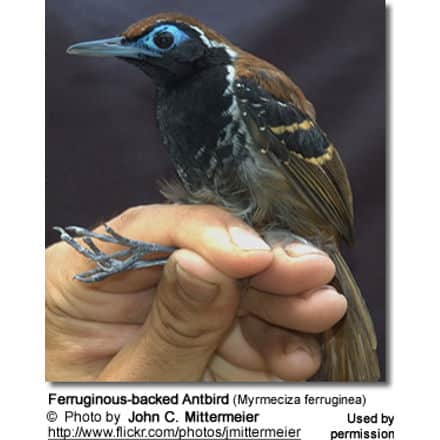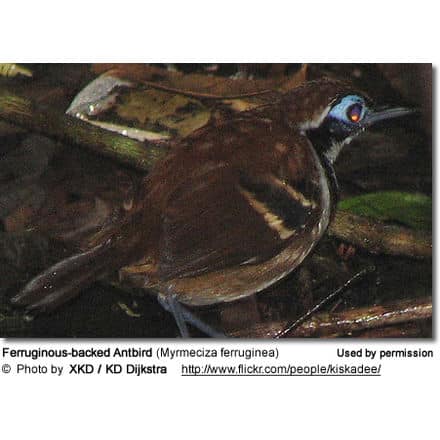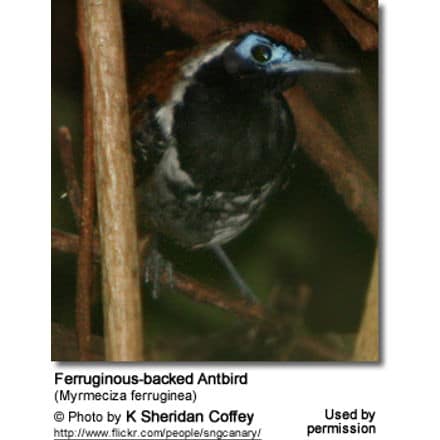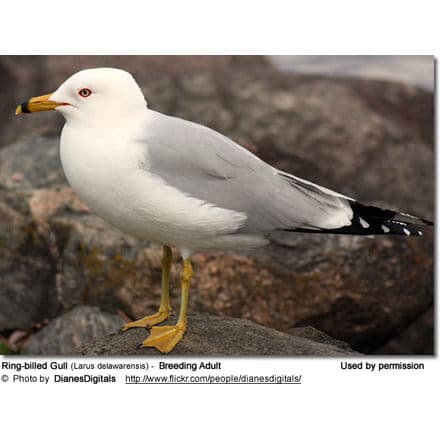Ferruginous-backed Antbirds
The Ferruginous-backed Antbirds (Myrmeciza ferruginea) occur naturally in South America.

Distribution / Habitat
The Ferruginous-backed Antbirds are found mainly north of the Amazon Basin and east of the Rio Negro in the South American countries of Venezuela, Guyana, Suriname, French Guiana and Brazil.
One subspecies M. f. eluta occurs within a relatively small area south of the Amazon between the Tapajós and Madeira Rivers in Brazil.
They are usually seen in pairs foraging on the floor of tropical evergreen forest and old second growth.
Subspecies and Ranges:
- Myrmeciza ferruginea ferruginea (Statius Muller, 1776)
- Range: Eastern Venezuela (eastern Bolívar east of the Caroní river), the Guianas and northeastern Amazonian Brazil (east of Branco and Negro rivers).
- Myrmeciza ferruginea eluta (Todd, 1927)
- Range: South central Amazonian Brazil between the lower Madeira and lower Tapajós rivers.
Description
The back is mostly reddish brown with two bold yellowish brown wing-bars.
Males: Their most distinctive feature is the pale blue area around the eyes (orbital skin), and an otherwise black face, throat and upper chest, which are outlined by a line of white running from behind the eye. The abdomen is light brownish. The legs and the lower bill are bluish-grey.
Females resemble the males, but can be identified by their white chins / throats (lacking in the male) which contrast contrasts with the black face and upper chest.

Diet / Feeding
Ferruginous-backed antbirds mostly feed on insects found on the ground.
Breeding / Nesting
One platform nest found in central Amazonas, Brazil, was situated on the ground in a concealed location and constructed out of dead leaves. The bottom of the nest was lined with plant fibers and roots.
The nest contained two white eggs with light purple mottling. The female appeared to be the only one incubating the eggs and remaining close to the nest even as intruders approached it.
Calls / Vocalizations / Sounds
https://www.xeno-canto.org/embed.php?XC=43111&simple=1
Alternate (Global) Names
Chinese: ???? … Czech: Mravencík guyanský / rezavopláštíkovy … Danish: Rustrygget Myrefugl … Dutch: Roodrugmiervogel … Finnish: Rusoselkämuura … French: Alapi à cravate noire, Fourmilier à dos roux … German: Rostrücken / Weißband-Ameisenvogel … Italian: Formichiere dorsotabacco, Mangiaformiche ferrugineo … Japanese: Kuriiroaridori … Norwegian: Prydmaurfugl … Polish: mrowiniec modrooki … Portuguese: Formigueiro-ferrugem, papa-formiga-de-costas-ferrugíneas, trovoada … Russian: ????????????? ????????? ?????????? … Slovak: mravcovka carovná, mravcovka ?arovná … Spanish: Hormiguero de Lomo Rufo, Hormiguero Ferruginoso, Hormiguero lomirrufo … Swedish: Rostryggad myrfågel
Beauty Of Birds strives to maintain accurate and up-to-date information; however, mistakes do happen. If you would like to correct or update any of the information, please contact us. THANK YOU!!!



